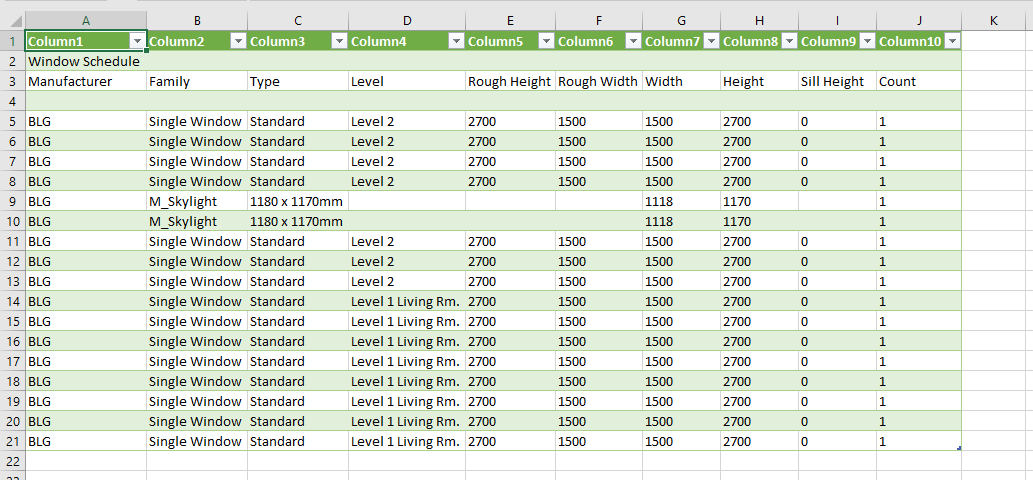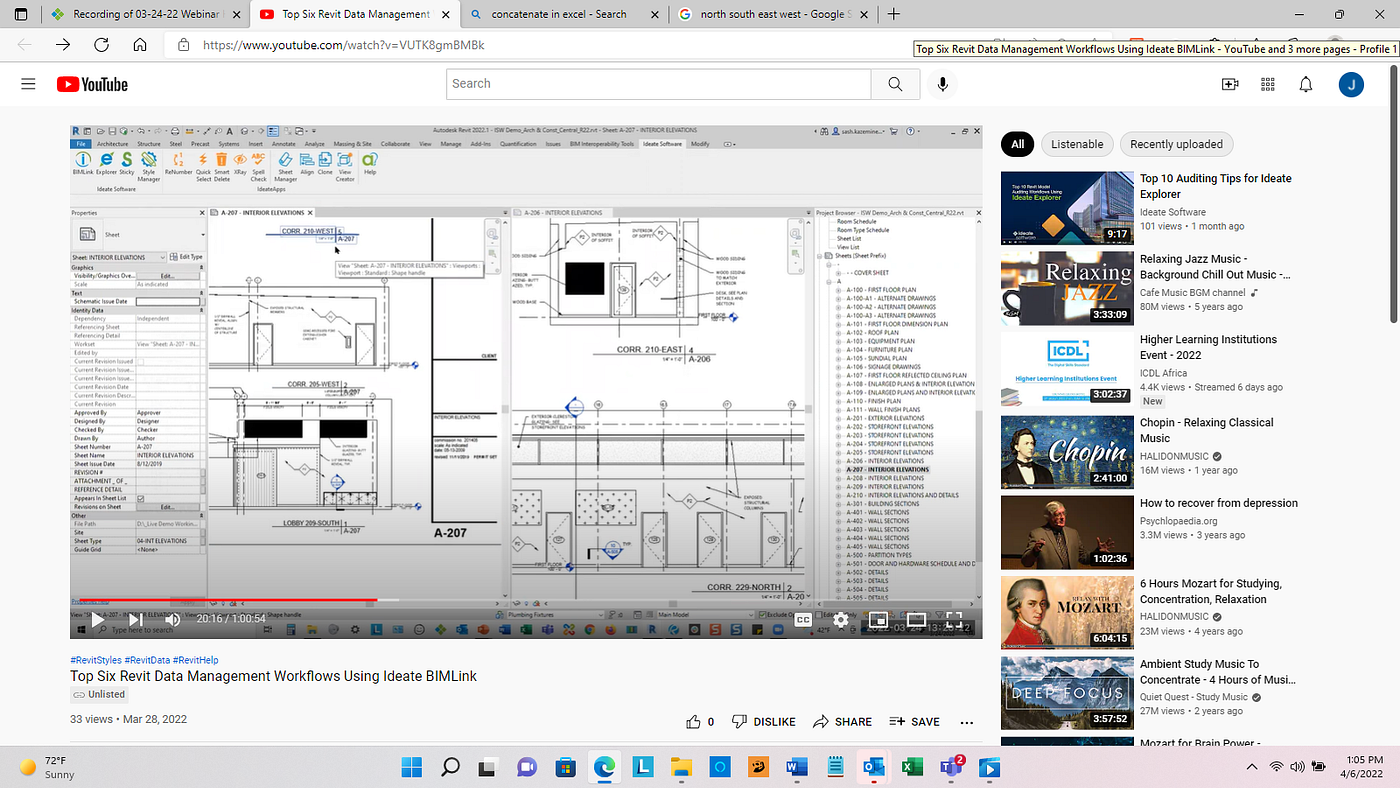Revit Tools for each Task: Your Ultimate Design Companion
Wiki Article
Excel-to-Revit: A Game-Changing Operations for Architectural Design - Unveiling the Secrets
Introducing excel-to-revit, the game-changing workflow that will revolutionize your layout procedure. With excel-to-revit assimilation, you can enhance your architectural design, unlock efficiency, and make the most of collaboration within your group. Obtain all set to take your building design to the next degree with excel-to-revit!The Power of Excel-to-Revit Combination

Visualize the comfort of being able to upgrade and edit project information in Excel, and instantaneously see those changes mirrored in your Revit design. No more hand-operated data access or tiresome updates. With Excel-to-Revit integration, you can conserve time and reduce mistakes by leveraging the power of Excel's formulas and features to automatically produce accurate data in Revit.
Not just does this combination boost effectiveness, yet it likewise boosts collaboration amongst staff member. You can conveniently share Excel files with coworkers, who can then import the information into their Revit designs. This advertises a seamless exchange of info and ensures that everybody is dealing with the most updated information.

Improving Architectural Style With Excel-To-Revit
Enhancing building layout is made easier with the use of Excel-to-Revit (revit plugins). With this powerful combination, you can enhance your process and save important time throughout the style process. By leveraging the abilities of Excel and Revit, you can effortlessly move information between the 2 systems, eliminating the requirement for hand-operated information entry and minimizing the threat of errorsExcel-to-Revit enables you to import and export information easily, enabling you to easily update and change your building designs. You can create timetables, calculate quantities, and generate reports in Excel, and afterwards move that information straight into your Revit model. This combination makes sure that your layout details is constantly current and synchronized, eliminating the need for manual updates and decreasing the possibilities of incongruities.
By utilizing Excel-to-Revit, you can additionally make use of the powerful computational capabilities of Excel. You can perform complex calculations, analyze data, and automate repetitive tasks, all within Excel. Then, with simply a couple of clicks, you can import the outcomes back right into Revit, enabling you to make educated style decisions and optimize your architectural designs.
Unlocking Effectiveness: Discovering the Excel-to-Revit Operations
Maximize your efficiency by flawlessly incorporating Excel and Revit for a more effective process. With the Excel-to-Revit workflow, you can open a whole new degree of performance in your building design process. By making use of the power of Excel's information administration capabilities and incorporating it with the versatility and precision of Revit, you can streamline your layout process and save useful time.One of the vital advantages of this integration is the capacity to import and export information between Excel and Revit. This suggests that you can quickly transfer task info, such as area routines or material amounts, from one software application to the various other, getting rid of the need for hand-operated data access and decreasing the chances of mistakes. You can also produce custom solutions and calculations in Excel to automate recurring tasks and execute complex estimations, which can then be flawlessly integrated right into your revit plugins Revit models.
In Addition, the Excel-to-Revit process permits for much better control and collaboration in between employee. With Excel working as a central information center, multiple staff member can work on various facets of the project concurrently, sharing and updating info in real-time. This not just improves communication yet also makes sure that every person is dealing with the most current information, eliminating the danger of disparities.
Making The Most Of Cooperation: Excel-to-Revit for Architectural Teams
By seamlessly integrating Excel and Revit, architectural teams can considerably boost cooperation and achieve much more effective layout end results. When utilizing this effective workflow, you can easily transfer data between Excel spreadsheets and Revit models, improving the style procedure and improving interaction amongst staff member. With Excel-to-Revit assimilation, you can easily import task information, such as space routines, product amounts, and task specifications, straight into Revit, eliminating the demand for manual information entrance and reducing the opportunities of errors. This smooth connection permits for real-time updates, making sure that everybody is collaborating with the most up-to-date info and avoiding disparities between various documents.In addition, by leveraging Excel's powerful calculation capacities, you can execute complex estimations and analysis on your layout information, providing beneficial insights and driving educated decision-making. This integration additionally enables you to export information from Revit to Excel, enabling you to develop detailed reports, graphes, and graphs for discussions and analysis. This collective workflow advertises effective communication and control among employee, as Excel works as a central center for information administration and sharing.
Total, by accepting the Excel-to-Revit operations, architectural teams can attain higher levels of cooperation, efficiency, and precision in their layout process. revit plugins. This combination encourages teams to collaborate seamlessly, making certain that everybody is on the exact same page and adding to the success of the job
Revealing the Keys of Excel-to-Revit Integration

One of the tricks of Excel-to-Revit assimilation is the capacity to leverage the power of formulas and computations in Excel to drive specifications and create facility geometries in Revit. You can connect Excel spreadsheets to Revit families, allowing you to input data directly into the spreadsheet and have it immediately update in the Revit design. This enhances the layout procedure and makes certain precision and uniformity throughout the task.
An additional key is the capacity to develop custom schedules and records in Excel, making use of information removed from Revit. This permits you to envision and assess task info in a method that is not possible within Revit alone. You can quickly generate quantity liftoffs, price price quotes, and job timelines, offering important insights for decision-making and project monitoring.
Furthermore, Excel-to-Revit combination allows efficient collaboration amongst employee. Multiple users can function on the exact same Excel spreadsheet simultaneously, making it easier to work with and track modifications. You can also use Excel's commenting attribute to supply feedback or connect style modifications.
Final Thought
So there you have it, the keys of excel-to-revit assimilation have been unveiled. This game-changing workflow has the power to improve architectural design, unlock efficiency, and optimize cooperation for architectural teams. By combining the power of Excel and Revit, designers can now work extra effectively, conserve time, and create far better styles. Why wait? Start integrating excel-to-revit assimilation into your building layout process today and revolutionize the method you function.With just a few clicks, you can import the outcomes back right into Revit, allowing you to make enlightened layout decisions and optimize your building styles.
By using the power of Excel's information monitoring abilities and combining it with the adaptability and precision of Revit, you can streamline your layout process and conserve useful time.
By perfectly incorporating Excel and Revit, architectural groups can considerably improve cooperation and accomplish more effective design end results. When using this effective process, you can conveniently transfer information between Excel spread sheets and Revit models, simplifying the style procedure and boosting interaction among group participants.Additionally, by leveraging Excel's effective computation capacities, you can carry out intricate calculations and evaluation on your layout data, giving important understandings and driving informed decision-making.
Report this wiki page